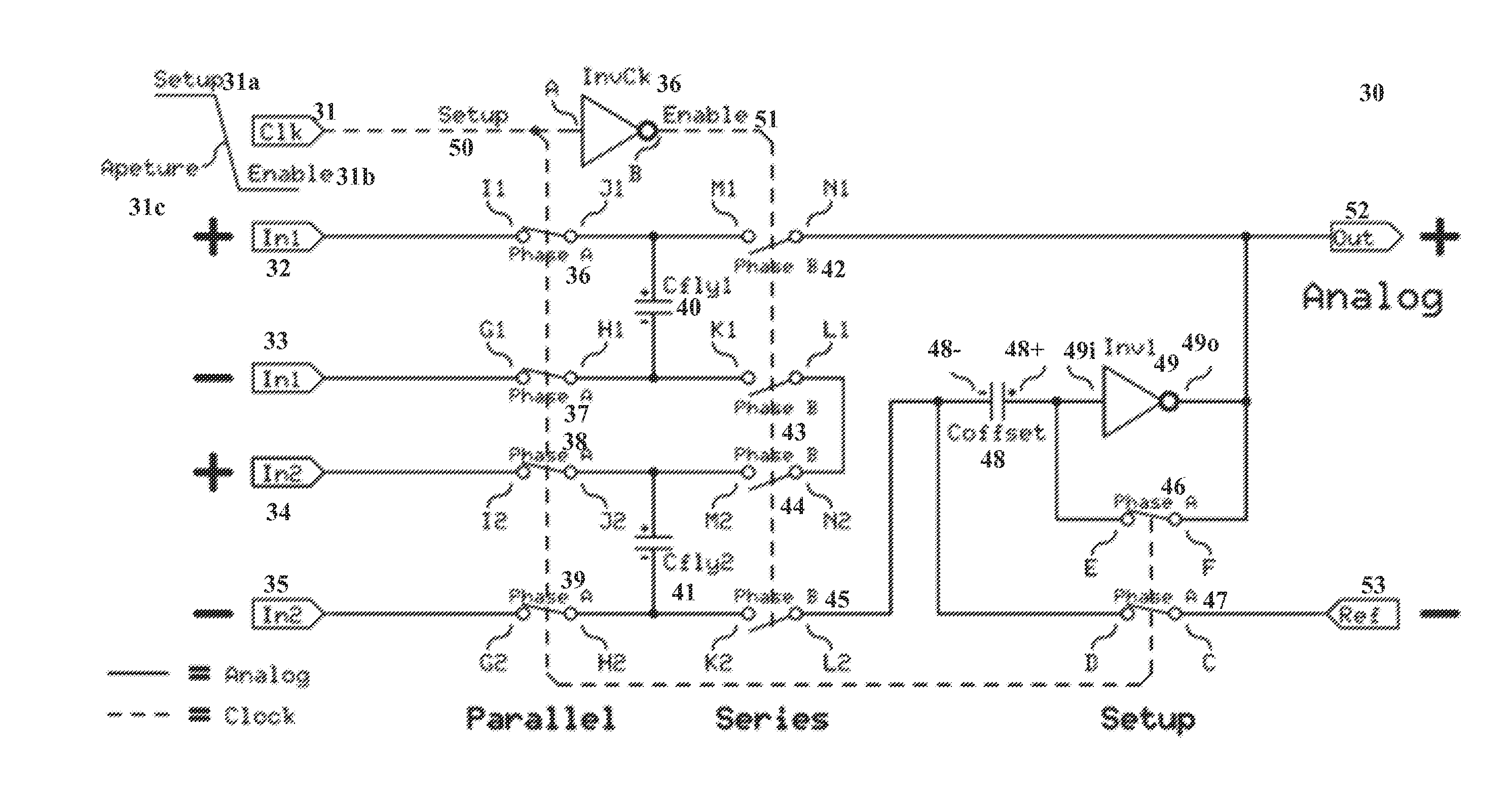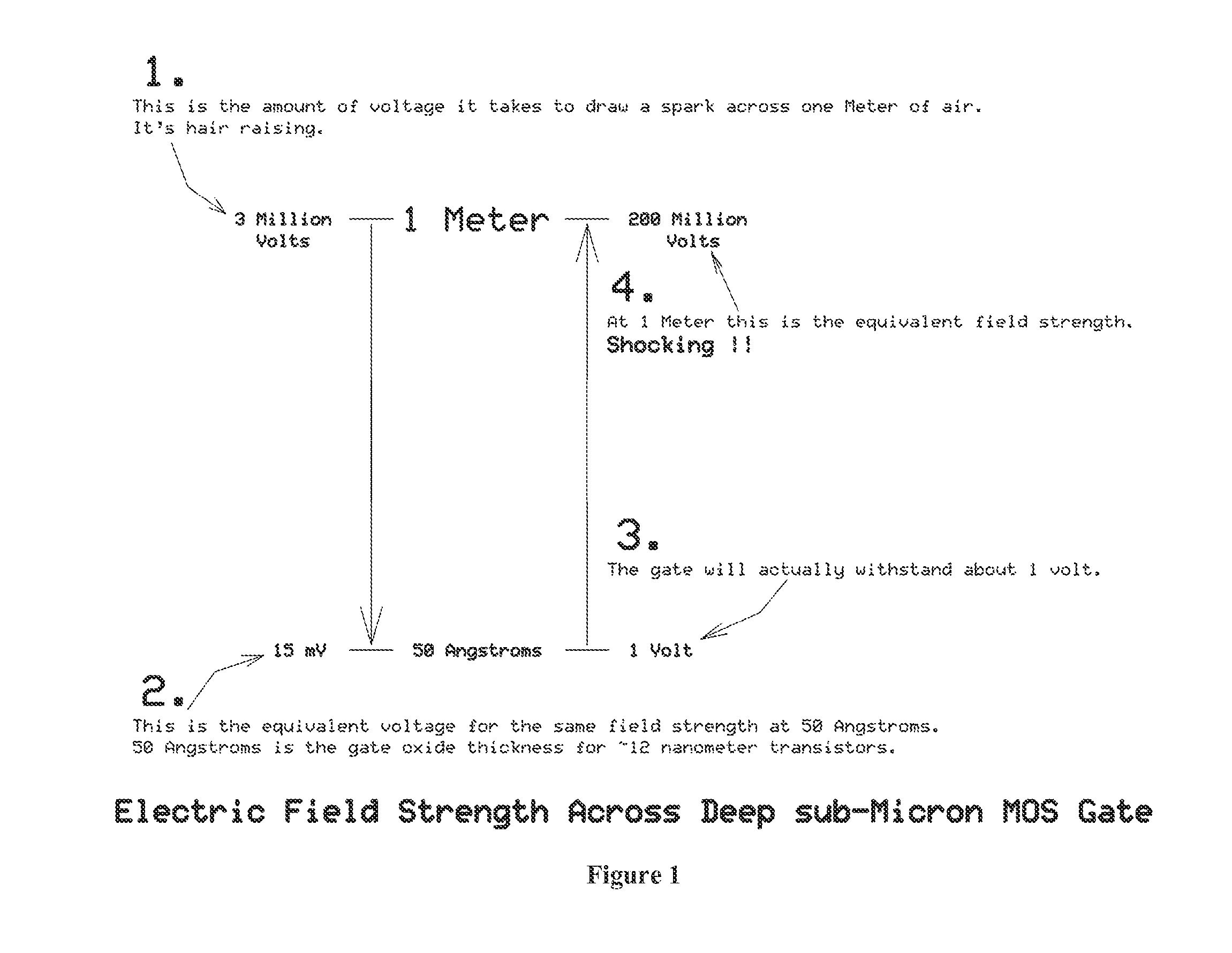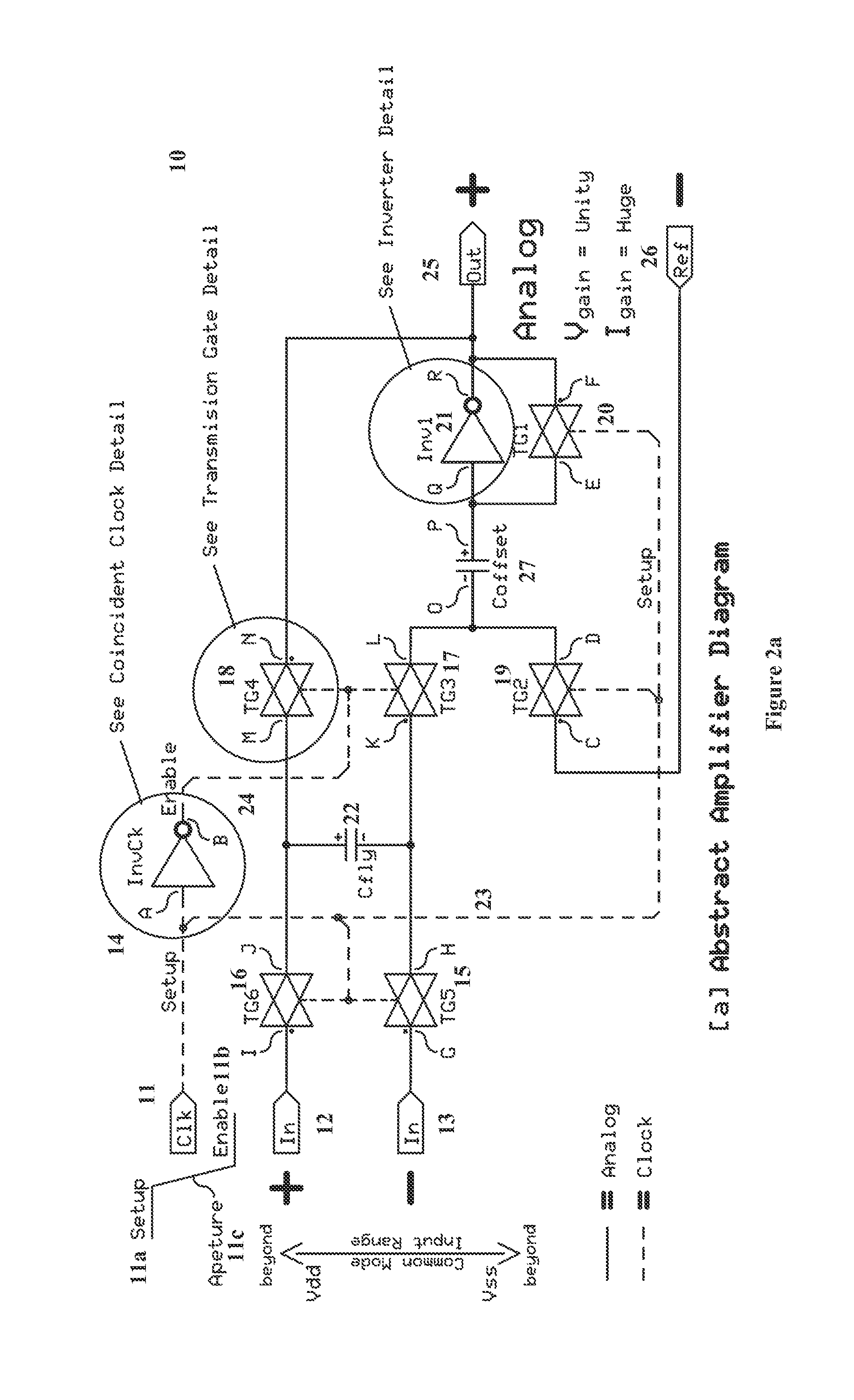Analog amplifiers and comparators
a technology of analog amplifiers and comparators, applied in differential amplifiers, amplifiers with semiconductor devices/discharge tubes, amplifiers, etc., can solve the problems of limiting the operating voltage to near a volt or less, severe limiting of analog signal swing, and inability to keep up with the integration of analog circuits/designs, etc., to achieve superior signal-to-noise ratio, reduce noise, and high performance
- Summary
- Abstract
- Description
- Claims
- Application Information
AI Technical Summary
Benefits of technology
Problems solved by technology
Method used
Image
Examples
Embodiment Construction
[0037]Analog Amplifier
[0038]An analog amplifier of a preferred embodiment of the present invention utilizes digital parts / components. For example, the central component is a digital inverter. The inverter input (the cause) is the inverse of the inverter output (the effect), therefore when the inverter output is feedback (connected to the inverter input); the inverter input will find equilibrium. This equilibrium will be referred to as the “sweet-spot.” The sweet-spot is the voltage where the inverter has its highest gain and fastest slew rate, thus the greatest sensitivity, and will be somewhere near the center of the power supply rails.
[0039]The output does not necessarily find the sweet spot; it is the input that always determines the sweet-spot. While the sweet-spot is not precise, it can be precisely measured before each operation and stored, for subsequent use during each operation. Changes in the precise voltage of the sweet-spot can be caused by numerous effects including age...
PUM
 Login to View More
Login to View More Abstract
Description
Claims
Application Information
 Login to View More
Login to View More - R&D
- Intellectual Property
- Life Sciences
- Materials
- Tech Scout
- Unparalleled Data Quality
- Higher Quality Content
- 60% Fewer Hallucinations
Browse by: Latest US Patents, China's latest patents, Technical Efficacy Thesaurus, Application Domain, Technology Topic, Popular Technical Reports.
© 2025 PatSnap. All rights reserved.Legal|Privacy policy|Modern Slavery Act Transparency Statement|Sitemap|About US| Contact US: help@patsnap.com



